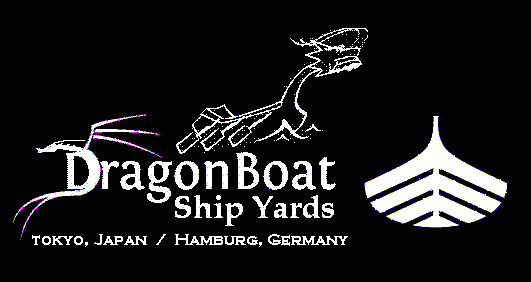


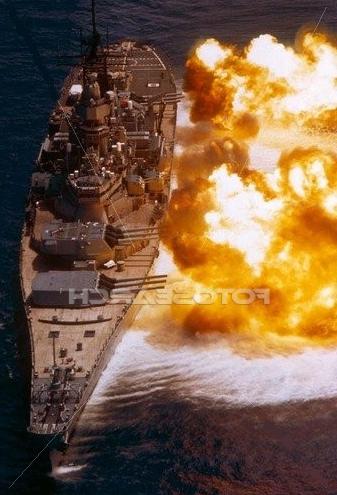

THOR - Norse God of Thunder
==========================================================================
Thor is the red-haired and bearded god of thunder in Germanic paganism and its subsets Norse paganism, Anglo-Saxon paganism and Continental Germanic paganism. The god is also recorded in Old Norse as: Žórr, Old English as Žunor, Old Saxon as Thunaer, and in Old Dutch and Old High German: as Donar, all of which are names deriving from the reconstructed Proto-Germanic name *Žunraz.
Proto-Germanic *Žunraz ("thunder") gave rise to Old Norse Žorr, German Donner, Dutch donder as well as Old English Žunor whence Modern English thunder.
Swedish tordön and Danish and Norwegian torden have the suffix -dön/-den originally meaning "rumble" or "din". The Scandinavian languages also have the word dunder, borrowed from Middle Low German.
Most surviving stories relating to Germanic paganism either mention Thor or center on Thor's exploits. Thor was a much revered god of the ancient Germanic peoples from at least the earliest surviving written accounts of the indigenous Germanic tribes to over a thousand years later in the late Viking Age.
Thor was appealed to for protection on numerous objects found from various Germanic tribes and Miniature replicas of Mjolnir, the weapon of Thor, became a defiant symbol of Norse paganism during the Christianization of Scandinavia. Thor was gradually demonized by the growing influence of Christian missionaries. After Christian influence was cemented in law, traces of belief went increasingly underground into mainly rural areas, surviving until modern times in Germanic folklore and more recently reconstructed to varying degrees in Germanic Neopaganism.
In the Poetic Edda and Prose Edda, Thor is the son of Odin and the giantess Jörd (Jord, the Earth). His wife is called Sif, and little is known of her except that she has golden hair. With his mistress, the giantess Jįrnsaxa (the 'iron cutlass'), Thor had a son Magni and with Sif he had his daughter Thrud. There is nothing in the myths that states the identity of the mother of his son Modi (the 'angry' one - god of Berserkers).
Thor owns a short-handled hammer, Mjolnir, which, when thrown at a target, returns magically to the owner. His Mjolnir also has the power to throw lightning bolts. To wield Mjolnir, Thor wears the belt Megingjord, which boosts the wearer's strength and a pair of special iron gloves, Jįrngreipr, to lift the hammer. Mjolnir is also his main weapon when fighting giants. The uniquely shaped symbol subsequently became a very popular ornament during the Viking Age and has since become an iconic symbol of Germanic paganism.
According to some scholars, the swastika shape may have been a variant popular in Anglo-Saxon England prior to Christianization, especially in East Anglia and Kent. Wilson (1894) points out that while the swastika had been "vulgarly called in Scandinavia the hammer of Thor", the symbol properly so-called had a Y or T shape.
A precedent of these Viking Age Thor's hammer amulets are recorded for the migration period Alemanni, who took to wearing Roman "Hercules' Clubs" as symbols of Donar. A possible remnant of these Donar amulets Alpine paganism was recorded in 1897, as a custom of Unterinn (South Tyrolian Alps) of incising a T-shape above front doors for protection against evils of all kinds, especially storms.
Mjöllnir simply means "crusher," referring to its pulverizing effect. It is related to words such as the Icelandic verbs mölva ("to crush") and mala ("to grind"), and Swedish noun mjöl ("flour"), all related to English meal, mill and miller. ("FE, FI, FO, FUM, I smell the blood of an Englishman. ... .. ... I'll grind his bones to make my bread."). Similar words, all stemming from the Proto-Indo-European root *melə, can be found in almost all European languages, e.g. the Slavic melvo ("grain to be ground") and molotu ("hammer"), the Russian Молот (molot - "hammer"), the Greek μύλος (mylos - "mill") and the Latin malleus "hammer", from which English mallet derives, as well as the Latin mola ("mill").
An alternative theory suggests that Mjöllnir might be related to the Russian word молния (molniya) and the Welsh word mellt (both words being translated as "lightning"). This second theory parallels with the idea that Thor, being a god of thunder, therefore might have used lightning as his weapon.
According to the Prose Edda, Thor was to meet his death to Ragnarök the hands of Jörmungandr. The two mortal enemies were locked in combat and though Thor did defeat the great serpent, he was only able to take nine steps before falling dead from the venom.

Jörmungandr, alternately referred to as the Midgardsormr or World Serpent, is a sea serpent of the Norse mythology, the middle child of the giantess Angrboša and the god Loki. According to the Prose Edda, Odin took Loki's three children, Fenrisślfr, Hel and Jörmungandr. He tossed Jörmungandr into the great ocean that encircles Midgard. The serpent grew so big that he was able to surround the Earth and grasp his own tail, and as a result he earned the alternate name of the Midgard Serpent or World Serpent. Jörmungandr's arch enemy is the god Thor. The last meeting between the serpent and Thor is predicted to occur at Ragnarök, when Jörmungandr will come out of the ocean and poison the sky. Thor will kill Jörmungandr and then walk nine paces before falling dead, having been intoxicated by the serpent's poison.
Many writers (Saxo, Adam of Bremen, Snorre Sturlason, Ęlfric of Eynsham) have identified Thor with Jupiter. The comparison can be borne: both are gods of the sky that control thunder and lightning, are children of the mother Earth, both have a son who is a god of physical strength (Hercules and Magni), and were at some time considered the most powerful of the gods. The oak tree was sacred to both gods and they had mysterious powers. Thor is to kill Jörmungandr and Jupiter, the dragon Typhon. Tacitus identified Thor with the Greco-Roman hero-god Hercules because of his force, aspect, weapon and his role as protector of the world.
Parallels with varying degrees of closeness can be found in other northern mythologies, such as Taranis (Celtic), Perkunas (Baltic), and Perun (Slavic), connected either to thunder, to oaks or to both. Additionally parallel either to Thor or Tyr are Finno-Ugric gods Torum, Thurms, Tere, Ilmarinen etc...

Thor presides over the air, he governs the thunder and lightening, the winds and rains, fair weather and crops...If plague and famine threaten, a libation is poured to Thor.
Thor was usually portrayed as a large, powerful man with a red beard, flowing hair, hearty enjoyment of food and drink and eyes that flashed of lighting.
Despite his ferocious appearance, he was very popular as the protector of both gods and humans against the forces of evil. He even surpassed his father Odin in popularity because, contrary to Odin, he did not require human sacrifices. In his temple at Uppsala he was shown standing with Odin at his right side.
The Norse believed that during a thunderstorm, Thor rode through the heavens on his chariot pulled by the goats Tanngrisni (gap-tooth), and Tanngnost (tooth grinder). Lightning flashed whenever he threw his hammer Mjollnir. Mjollnir was made for him by the dwarfs Brok and Eitri, who made many magical objects for the gods. Thor wears the belt Megingjard which doubles his already considerable strength. His greatest enemy is Jormungand, the Midgard Serpent. At the day of Ragnarok, Thor will kill this serpent but will die from its poison. His sons will inherit his hammer after his death. Ragnarok, also called Gotterdammerung, means the end of the cosmos in Norse mythology.
Thor was very well-known for his quick and hot temper. This was often vented on the giants, the main enemies of the gods. Thor would smash their heads with his mighty hammer Mjollnir. To wield this awesome weapon he needed iron gloves and a belt of strength. Mjollnir would return to Thor's hand after being thrown and was symbolic of lightning.
Thor was foremost of the gods to the common man, who would call on him to ensure fertility, and he was widely worshiped. Hammer shaped amulets, a symbol of Thor because it was his weapon, were worn about the neck well into the Christianization of Scandinavia. There are molds from that time which contain both cross and hammer shapes, side by side. His name occurs in numerous place names, and it was his statue which was central in the great temple at Uppsala. He was associated by the Romans with Jupiter. Donar was an early version of Thor among the early Germans. The anglo-saxons worshiped a thunder god named Thunor.
Thor has lived on, not as a part of any religion, but on our weekly calendar. Thursday (Thor's Day) was derived from this mighty god.

=================================================================================
NB: The above text has been collected / excerpted / edited / mangled / tangled / re-compiled / etc ... from the following online sources :
Thor - www.mythicalrealm.com
Thor - wikipedia article #1
Mjolnir - wikipedia article #2
Jormungandr - wikipedia article #3




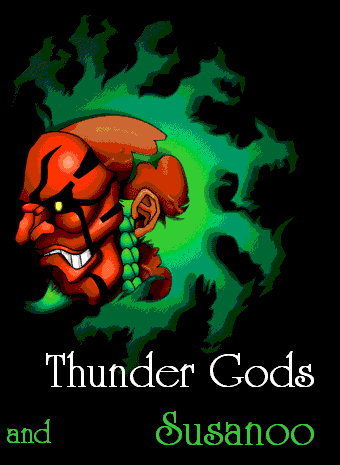





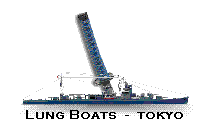
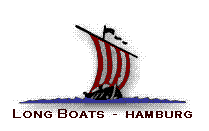
ask and ye shall receive ... 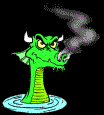
... be careful what you ask for ... you might get it













